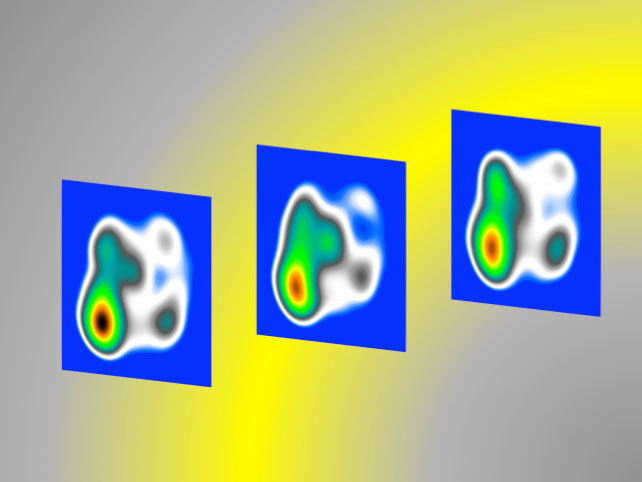| May 18, 2022 |
Study shows ultrafast dynamics of electron orbitals in molecules
(Nanowerk News) Researchers from Universität Hamburg, European XFEL and DESY have succeeded in looking at details of molecular orbitals at DESY's free-electron laser FLASH. The team reports in the journal Nature Communications ("Ultrafast orbital tomography of a pentacene film using time-resolved momentum microscopy at a FEL") on the new method, which makes it possible to observe the temporal change of the wave function of molecules.
|
|
These changes are crucial for reactions of molecules on surfaces and can lead to new insights into the development of functional devices.
|
 |
| Snapshots of molecular orbitals contain high-precision details about photoinduced electronic and nuclear transformations on sub-picosecond time scales. (Image: Universität Hamburg, Marvin Reuner und Daria Gorelova)
|
|
Molecular adsorbates on solid surfaces form hybrid organic-inorganic materials whose properties are of great benefit for applications in optoelectronics, catalysis, or energy storage.
|
|
Photoelectron microscopy can be used to visualize the electronic orbitals of molecules with atomic resolution. The shape of the orbitals provides new insights into the properties of hybrid organic-inorganic materials.
|
|
“We have extended this technique to the time domain to study dynamic processes at the hybrid interface that occur within a few picoseconds of optical excitation,” says Daria Gorelova, a professor at Universität Hamburg and in the Cluster of Excellence CUI: Advanced Imaging of Matter.
|
|
To understand the interplay between charge, electron and structural dynamics, the team from European XFEL, DESY and the universities of Hamburg, Würzburg, Kiel und Freiberg studied photoexcited pentacene molecules adsorbed on a silver substrate. At FLASH they obtained snapshots of molecular orbitals and high-precision details about the electrons in the very fast reactions.
|
|
To interpret these data, the team developed a theoretical description combining experimental data with calculations. This revealed details of fast intramolecular electron and structural changes at the surfaces.
|
|
“Ultrafast pulse microscopy will provide unprecedented insight into photon-triggered dynamics and open new avenues for surface research,” says Markus Scholz, scientist at FLASH.
|
|
“We are very pleased about the successful experiment at DESY,” says European XFEL Scientific Director Serguei Molodtsov, who is also one of the authors of the paper. “At European XFEL, we are currently building a momentum microscope for photoelectron spectroscopy using a shorter wavelenth, which will complement the research at FLASH and provide even more detailed images of hybrid structures.”
|

